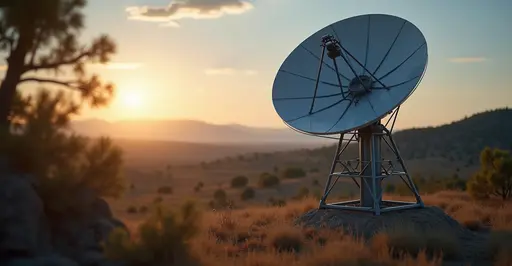
High-Speed Internet Revolution Reaches Rural Areas
New Satellite Networks Bridge Digital Divide
Thousands of rural communities across North America and Europe are finally getting reliable high-speed internet thanks to new Low Earth Orbit (LEO) satellite constellations. Companies like SpaceX's Starlink, Amazon's Project Kuiper, and OneWeb have launched over 5,000 satellites since 2020, creating a web of connectivity that reaches previously underserved regions.
The technology represents a major leap from traditional geostationary satellites, which orbit 35,000 km above Earth causing significant latency. LEO satellites operate just 550 km above the surface, enabling broadband speeds up to 300 Mbps with latency under 50ms – comparable to cable internet.
Texas Launches $30 Million Grant Program
In January 2025, Texas Comptroller Glenn Hegar announced a groundbreaking LEO Satellite Grant Program targeting rural communities left behind by fiber-optic expansion. The $30 million pilot project focuses on areas where traditional broadband infrastructure proved economically unfeasible.
"This technology provides high-speed internet to hard-to-reach homes within weeks rather than years," Hegar stated. "We're seeing immediate impacts in education, telemedicine, and agricultural innovation."
Federal Legislation Gains Momentum
Congressman Dave Taylor (OH-02) introduced the Rural Broadband Assistance Act in April 2025, which would establish permanent technical support for communities navigating federal broadband programs. The bill has gained bipartisan support with co-sponsor Rep. Eric Sorensen (IL-17) noting, "Small towns just need help getting started with broadband applications."
Taylor previously introduced the Bridging the Broadband Gap Act, which would subsidize satellite receiver installation and first-year service fees using BEAD program funds.
How Satellite Broadband Works
Users install pizza-sized antennas that automatically track satellites passing overhead. These connect to ground stations that feed into existing internet infrastructure. Unlike cable or fiber, installation requires no trenching or extensive construction.
Early adopters like the remote community of Alpine, Texas (population 5,800) report transformational changes. "My telehealth appointments no longer freeze mid-session," said resident Martha Flores. "My grandson can finally attend virtual coding classes."
Challenges Remain
Despite progress, obstacles include:
- Equipment costs ($500-600 initially)
- Monthly fees ($100-120)
- Weather-related signal disruptions
Industry leaders expect prices to drop as competition intensifies, with Amazon's Project Kuiper planning to deploy 3,236 satellites by 2026.
The Future of Rural Connectivity
The FCC reports satellite broadband could eliminate America's rural connectivity gap by 2030. With over 100,000 new satellites proposed globally by 2035, this technology promises to revolutionize connectivity for farmers, indigenous communities, and remote settlements worldwide.

 Nederlands
Nederlands
 English
English
 French
French
 Deutsch
Deutsch
 Espaniol
Espaniol
 Portugese
Portugese



